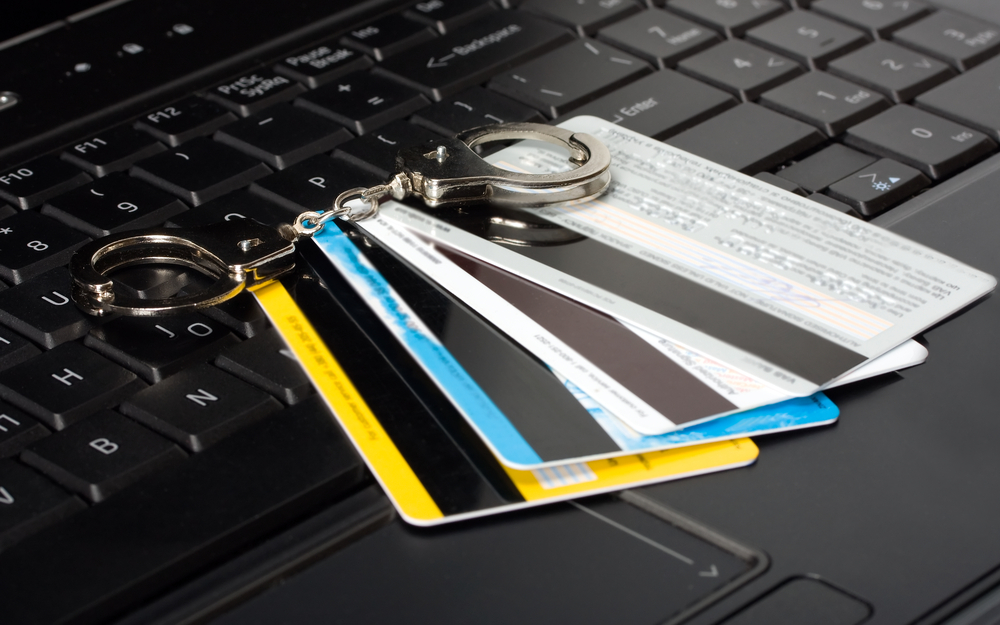Credit Cards & Loans
Card fraud soars: how to stay protected

Cases of card fraud have increased 18% in one year. Follow these steps to avoid becoming a victim.
Card fraud is big business for crooks and is on the rise. And while keeping a close eye out for pickpockets or opportunistic thieves was once the best protection, technology has made it much easier for people to become a victim.
According to Financial Fraud Action UK (FFA UK), fraud losses on all payment cards – that includes credit, debit, charge and ATM-only cards – totalled a staggering £567.5m in 2015, an increase of 18% on the previous year, and accounted for three-quarters of financial fraud losses.
Criminals are becoming more savvy, using technology to steal personal data to conduct impersonation and deception scams.
Unlocked smartphones and tablets are particular gold mines providing crooks access to personal contact details, mobile banking details and other financial transactions.
Matt Sanders, from Gocompare.com Money, says: “We’re all potential targets for fraudsters and, as FFA UK’s figures clearly show, an increasing number of people are taken in by criminals’ increasingly sophisticated scams. But, it’s far easier to guard against fraud if you’re aware of the different types of scams criminals operate and know the warning signs to look out for.”
Types of payment card fraud:
Card-not-present fraud: Also known as ‘remote purchase fraud’, this type of fraud occurs when card details are fraudulently used to make purchases that don’t require you to physically present a card. These include purchases made online, through the post or over the telephone. Criminals fraudulently obtain card details using a range of tactics such as recording card details during a legitimate transaction or downloading malware on to the victim’s computer.
Lost and stolen cards: Fraudsters use a lost or stolen card to make a purchase or to withdraw cash from an ATM.
Card ID theft: Criminals use fraudulently obtained cards or card details along with stolen personal information to either open or take over a card account held in someone else’s name. Card ID theft takes two forms:
- Application fraud: a criminal uses stolen, discarded or fake documents to open an account in someone else’s name.
- Account take over: a criminal takes over another person’s genuine card. Fraudulently obtained personal information is used to deceive the card company and the fraudster can carry out transactions from the account, request changes to the account or ask for a new card to be issued.
Card not received fraud: Cards may be stolen in transit between the card issuer and the genuine card holder. The risk of this type of fraud increases if you live somewhere with communal letterboxes which provide shared access to mail.
Cash machine fraud: Criminals target ATMs to steal cards and card data. Tactics range from peering over someone’s shoulder to see their PIN, then stealing their card – to the use of devices attached an ATM which can copy or ‘skim’ card details and PIN number and trap the card in the machine.
Counterfeit card fraud: This type of card fraud involves criminals creating a fake card using details from the magnetic strip of a genuine card. Counterfeit cards are typically used overseas in countries which haven’t upgraded to Chip & PIN.
Gocompare.com Money’s tips on reducing the risk of becoming a victim of card payment fraud:
Protect your cards and your personal information:
- Never provide debit or credit card numbers or PINs or other personal information in response to an unsolicited email, online or telephone request. Genuine banks and card providers never request information in this way;
- When you receive a new payment card – remember to sign the back;
- Never let your card or card details out of sight when making a transaction;
- Protect your personal information on social media, use privacy settings and don’t accept friend requests from people you don’t know;
- Don’t use the same passwords for social media sites and online banking;
- Access your online financial accounts by typing the web address into your browser;
- Buy a shredder to dispose of card statements and other documents containing personal or financial information you no longer need;
- Always PIN protect smartphones and other mobile devices.
Protect your PIN and keep it secret:
- Choose a strong PIN. Don’t use obvious numbers, for example, the year you were born, your wedding anniversary, telephone or house number. Fraudsters can easily pick-up this kind of personal information from social media profiles and online directories.
- Memorise your PIN – don’t write it down or disclose it to anyone else;
- Don’t use the same PIN for all your payment cards;
- When using an ATM or other card reader always shield your PIN with your hand.
Online safety measures:
- Regularly update your computer’s firewall or antivirus software;
- When shopping online, always look carefully at the site for secure transaction symbols. The web address should start ‘https’ and the page should display the secure payment ‘lock’ logo;
- If possible, always shop or bank online from your personal computer;
- Always log-off from a site once you’ve completed a transaction.
Regularly review card and bank statements:
- Check statements on a regular basis and look out for unusual or unauthorised transactions;
- Contact your card provider immediately if you suspect fraud.
Diary dates:
- Note when you should be receiving a new payment card. If it doesn’t arrive when you expect it, contact the card provider as soon as possible.